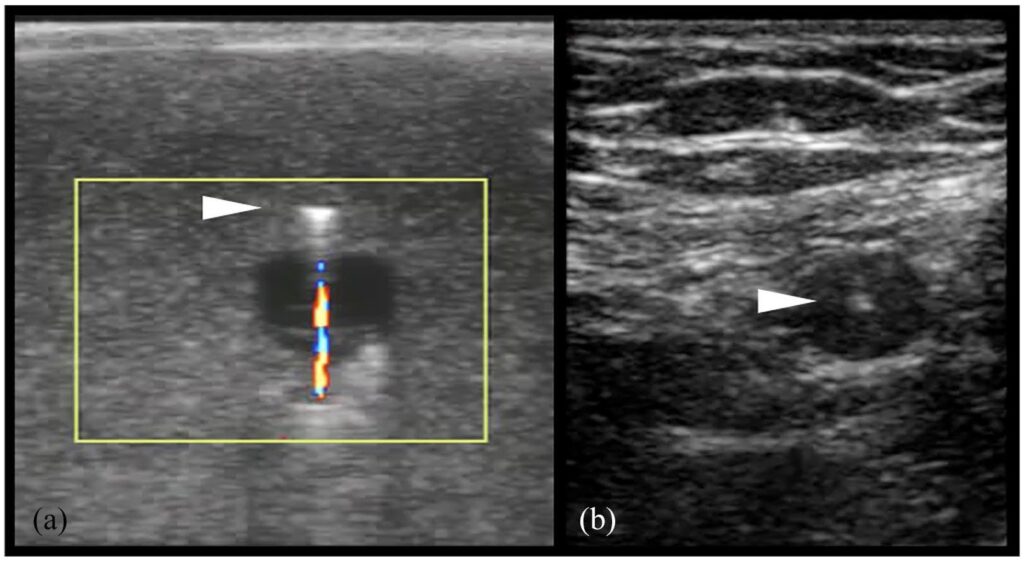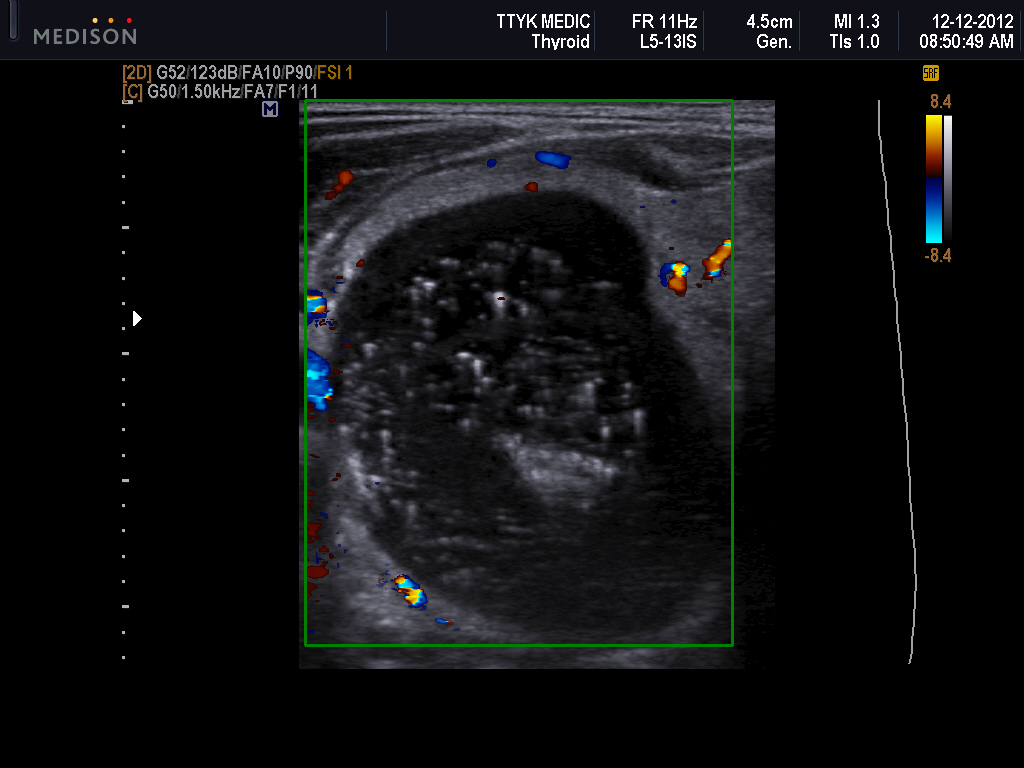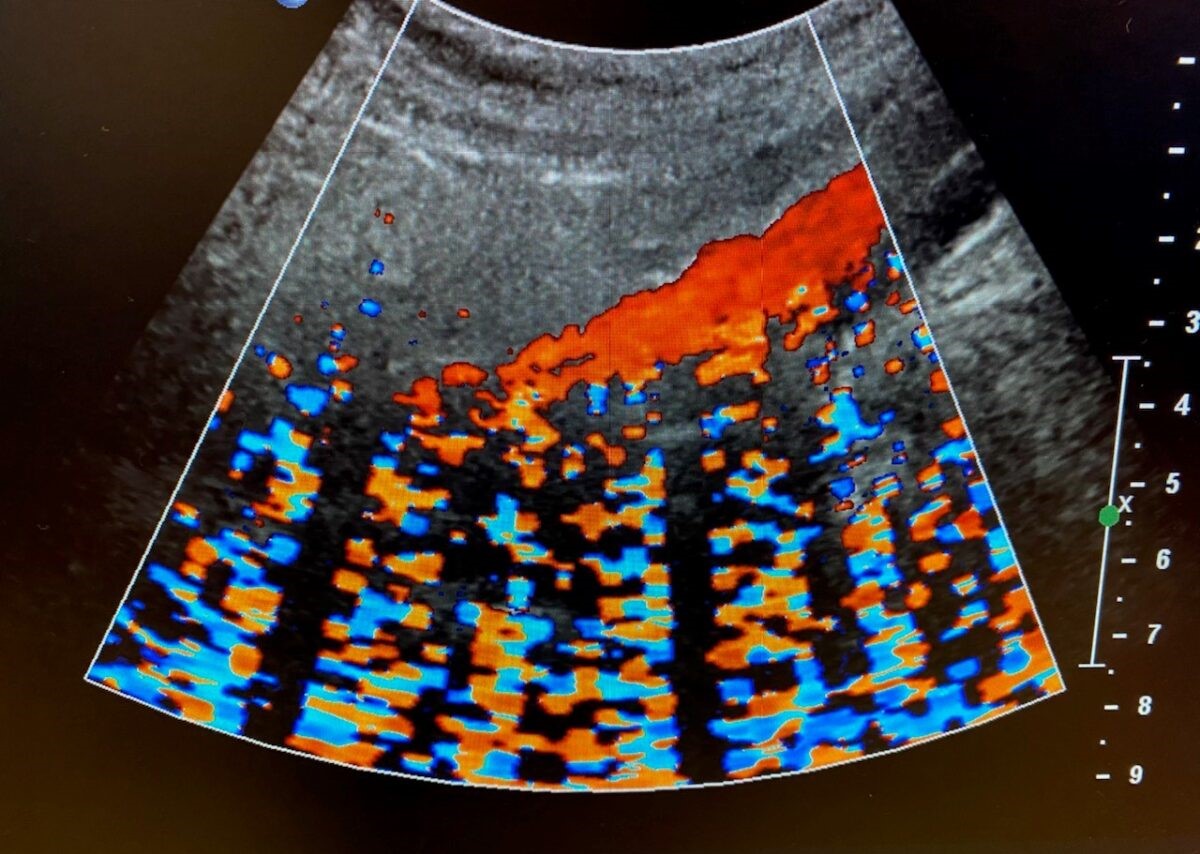Ultrasound artifacts are deviations from the actual tissue structures that appear in ultrasound images. These artifacts can often make interpreting images challenging, yet understanding them is essential for accurate diagnosis and treatment planning. On this page, we’ll explore the various types of ultrasound artifacts, their causes, and how they can impact clinical interpretation.
What Are Ultrasound Artifacts?
In ultrasound imaging, artifacts refer to visual elements that do not accurately represent the tissue structure or anatomy of the subject being scanned. These artifacts can result from physical and technical limitations of ultrasound equipment, patient positioning, or the interaction between ultrasound waves and bodily tissues. By understanding and identifying ultrasound artifacts, healthcare professionals can improve diagnostic accuracy and patient outcomes.
Common Types of Ultrasound Artifacts
Reverberation Artifact
Reverberation occurs when ultrasound waves bounce between two strong reflectors, causing repeated echoes to appear in the image. This artifact often produces a series of parallel lines and can occur in areas where sound waves encounter strong reflectors like bones or metallic objects.
Shadowing Artifact
Shadowing is the appearance of a dark shadow behind a highly reflective or attenuating object, such as bones or calcifications. This artifact occurs because sound waves are blocked or absorbed, leaving a dark area on the ultrasound image. Shadowing can help identify solid structures within the body.
Enhancement Artifact
Enhancement is the opposite of shadowing, appearing as a bright area behind a low-attenuating structure, like a cyst or fluid-filled organ. This artifact helps clinicians identify areas with liquid content, as the ultrasound waves pass through fluid more easily, creating an enhanced bright region.
Mirror Image Artifact
This artifact creates a duplicated or mirrored structure on the opposite side of a strong reflector, such as the diaphragm or pleura. The result is a misleading image that may confuse less experienced sonographers, so familiarity with this artifact is essential for accurate interpretation.
Edge Artifact
Edge artifacts arise when sound waves bend around the edges of a rounded structure, such as a vessel or cyst, causing an echo-free (dark) area along the edge of the structure. This effect occurs due to refraction and can misrepresent the true size and shape of the object.

Causes of Ultrasound Artifacts
Artifacts in ultrasound imaging result from various factors, including:
- Physical Interactions: Interactions between ultrasound waves and body tissues, such as absorption, reflection, and refraction, can lead to artifacts.
- Equipment Limitations: The resolution, settings, and calibration of ultrasound equipment can contribute to the creation of artifacts.
- Patient Movement: Motion from the patient or within the body, such as blood flow, can introduce artifacts, making it difficult to capture a clear image.
- Operator Technique: Improper probe positioning or angle can lead to artifacts in the image.
Clinical Significance of Ultrasound Artifacts
Understanding and interpreting ultrasound artifacts correctly can make a significant difference in diagnosis and patient care. By recognizing artifacts, clinicians can avoid misinterpretations and make more accurate assessments. For instance, shadowing artifacts can aid in identifying solid structures, while enhancement artifacts may indicate fluid-filled areas, helping to distinguish between different types of lesions.
Techniques to Minimize Artifacts in Ultrasound Imaging
While some artifacts are unavoidable, there are techniques to reduce their impact:
- Adjusting Gain Settings: By modifying the gain, sonographers can minimize noise that contributes to artifacts.
- Changing Probe Position: Adjusting the probe angle or position can reduce the occurrence of certain artifacts, such as mirror image artifacts.
- Using Doppler Mode: In some cases, switching to Doppler mode can help differentiate artifacts from real anatomical structures.
- Optimizing Patient Position: Positioning the patient properly can reduce motion artifacts, especially when imaging areas with involuntary movements, like the heart.

Practical Tips for Identifying and Managing Artifacts
- Compare Multiple Views: Taking images from multiple angles and positions can help differentiate true structures from artifacts.
- Use Appropriate Probes: Choosing the right transducer for the examination can improve image quality and reduce artifacts.
- Recognize Familiar Patterns: Identifying common artifact patterns, such as reverberation or shadowing, can help in interpreting images more accurately.
- Seek Expert Consultation: In cases of uncertainty, consulting with an experienced sonographer or radiologist can provide clarity and guidance.
Conclusion: The Importance of Artifact Recognition in Ultrasound
Artifacts are an inherent part of ultrasound imaging, presenting both challenges and opportunities for clinicians. Proper training in artifact recognition is essential for professionals to accurately interpret ultrasound images and provide high-quality care. By understanding the origins and types of ultrasound artifacts, as well as methods to minimize their impact, sonographers can enhance diagnostic precision and patient outcomes.
Learn more about how to accurately interpret ultrasound artifacts and improve your skills in ultrasound imaging with US Tip’s resources and expert guides.
Related: Ultrasound Safety Ensuring Safe and Effective Imaging for Patients

